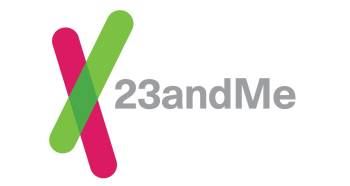From the 23andMe Blog:
 In the latest update to 23andMe’s Ancestry Reports and features, we’ve added finer detail for customers with Ashkenazi Jewish ancestry allowing them to trace their family connections back to seven genetic groups corresponding to regions within Eastern and Central Europe.
In the latest update to 23andMe’s Ancestry Reports and features, we’ve added finer detail for customers with Ashkenazi Jewish ancestry allowing them to trace their family connections back to seven genetic groups corresponding to regions within Eastern and Central Europe.
Some of these regions overlap, but they map to areas with deep historical and cultural significance for people of Ashkenazi ancestry. The long history of pogroms, persecution, and the devastating horror of the Holocaust annihilated the connections for many of those with Ashkenazi ancestry to their families’ historical origins. DNA testing has the potential to offer hints to those connections where family history may be lacking.
That is in part the purpose of this update, to offer customers with Ashkenazi ancestry a deeper connection to those historical regions and cultural connections.
What is Ashkenazi Jewish Ancestry?
People with Ashkenazi ancestry are connected to Jews who settled in Central and Eastern Europe during the Middle Ages. The word itself, “Ashkenazi” is thought to come from the name Ashkenaz, a descendant of Noah in the Hebrew bible.
During their long history in Europe Ashkenazi Jews faced persecution and cultural isolation that in turn impacted their genetics. Starting in the 11th century, Jews living in Europe began to experience intense persecution, which eventually led to their expulsion from many countries. This along with the plague that hit Europe in the 14th and 15th centuries decimated the Jewish population, which plummeted by close to 90 percent.
Those forces that both isolated the population and drastically reduced its size created what is known in genetics as a “population bottleneck.” Bottlenecks can be caused by geographic barriers, disease, migration, or persecution that in turn isolates a population over generations. That is what happened among Ashkenazi Jewish communities of Central and Eastern Europe.
Scientists think that, because of this bottleneck, the 10 million Ashkenazi Jews who are alive today have descended from just a few hundred founding individuals. Interestingly their modern descendants remain genetically more similar to other Jewish populations than to their European neighbors. In the twentieth century, amidst two World Wars, and the Holocaust, and after the war years, many Ashkenazi Jews immigrated to what is now Israel or to the Americas in search of greater cultural and religious acceptance. Today, over five million ethnic Ashkenazi Jews live in the U.S.
You can read a lot more at: https://blog.23andme.com/ancestry-reports/detail-for-ashkenazi-ancestry/